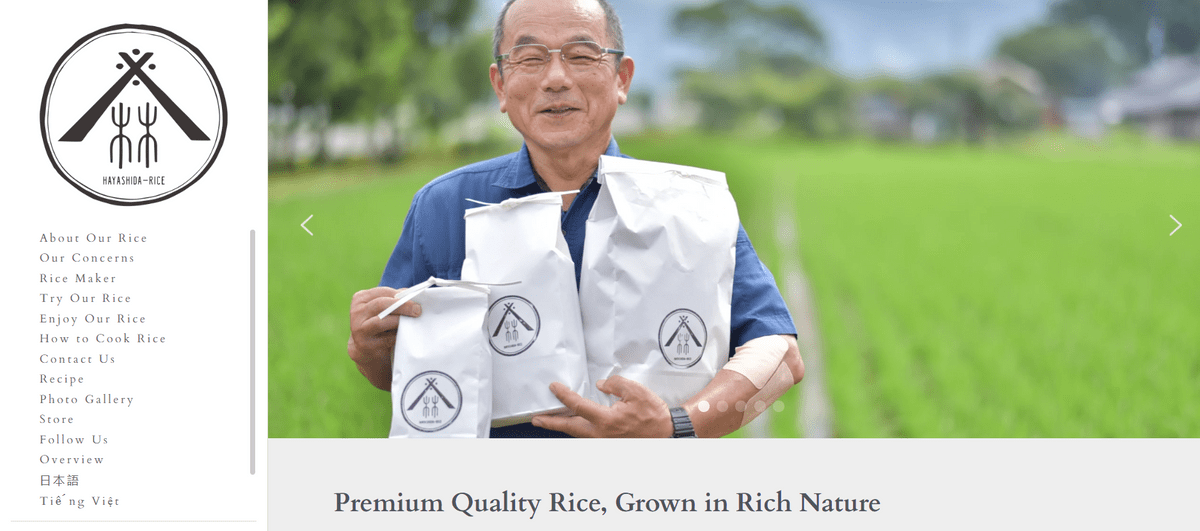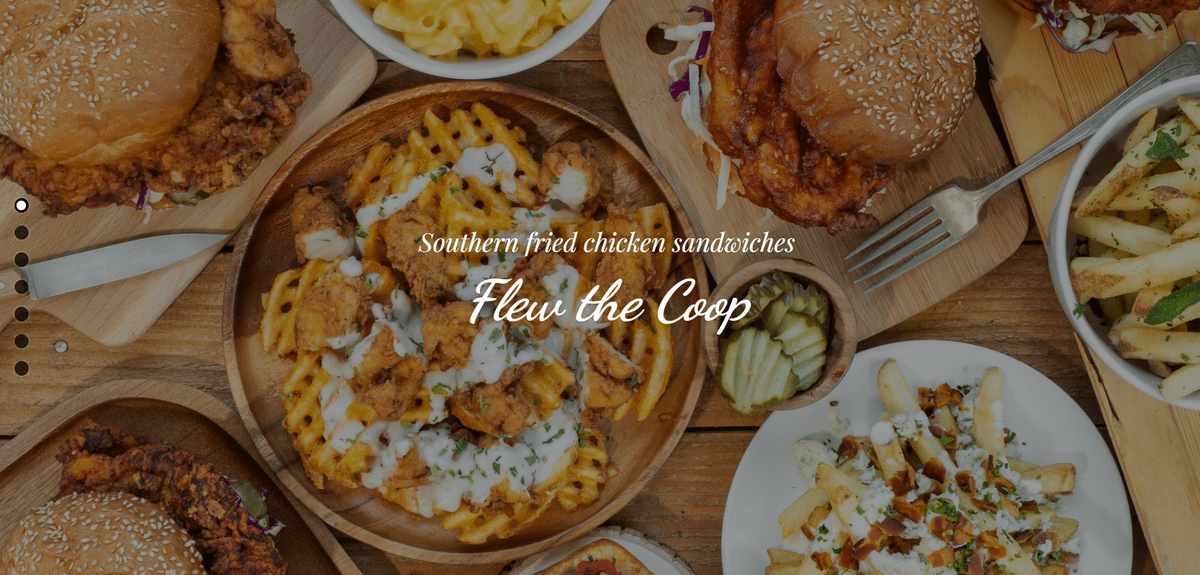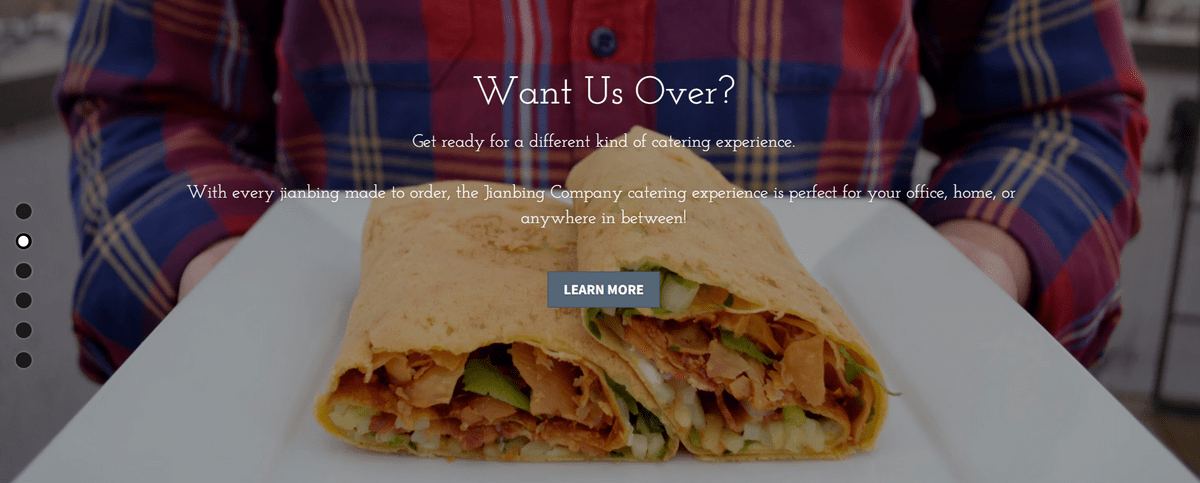How To Ship Food: Tips & Tricks For Your E-commerce Success
How To Ship Food: Tips & Tricks For Your E-commerce Success

Proper food shipping is crucial for ensuring the safety and quality of perishable items during transit. Whether sending homemade treats to loved ones or running a food delivery business, understanding the best practices on how to ship food is essential. However, learning how to ship food comes with challenges, such as maintaining temperature control and complying with regulations. That's where Strikingly can help you succeed. With its user-friendly platform, Strikingly provides tools and resources to streamline your food shipping process and ensure customer satisfaction.
Shipping food requires careful attention to detail to preserve freshness and prevent spoilage. Proper packaging, cooling methods, and compliance with regulations are all crucial in maintaining the quality and safety of perishable items. By ensuring that your food arrives in optimal condition, you can provide a positive experience for your customers and build trust in your brand.
Mastering how to ship food is like sending a delicious surprise to your customer's doorstep. It's essential to consider the delicate nature of perishable items and take every precaution to ensure their freshness and quality upon arrival. Every step must be handled carefully, from selecting suitable packaging materials to implementing efficient cooling methods. By going the extra mile to preserve your food's integrity, you not only delight your customers but also establish a reputation for reliability and excellence in your brand. So, let your delectable treats travel confidently, knowing they will reach their destination in perfect condition, ready to be savored and enjoyed.
Common Challenges in Shipping Food
Learning how to ship perishable food poses unique challenges due to their vulnerability to temperature fluctuations and potential contamination risks. Inadequate insulation or improper cooling methods can lead to spoilage or even health hazards. Additionally, navigating complex food safety regulations at the federal level (such as FDA guidelines) and local health department requirements can be overwhelming without proper guidance.
Understanding how to ship perishable food can be a real headache, especially regarding temperature control and potential contamination. One wrong move and you could end up with spoiled goods or, worse, a health hazard on your hands. And if that wasn't enough, trying to navigate the labyrinth of food safety regulations at both the federal and local levels is sufficient to make even the most seasoned shipper break out in a cold sweat. It's like trying to solve a Rubik's Cube blindfolded while riding a unicycle – not for the faint of heart! So, if you're thinking about taking on the challenge of mastering how to ship food, buckle up and prepare for a wild ride.
How Strikingly Can Help You Succeed
Strikingly offers a comprehensive solution for overcoming the challenges of mastering how to ship food effectively. With its intuitive platform, you can create professional labels that include clear handling instructions, allergen information, and ingredient lists—all essential elements for safely transporting food items. Moreover, Strikingly enables you to optimize delivery routes efficiently while providing real-time tracking updates to you and your customers.
With Strikingly's user-friendly interface and robust features, you can streamline your food shipping process, ensuring that your perishable items arrive at their destination in optimal condition. Stay tuned as we delve into the specifics of food safety regulations, packaging methods, selecting reliable shipping carriers, properly labeling packages, ensuring timely delivery, and more.
Understanding Food Safety Regulations
Image taken from Hayashida Rice
When mastering how to ship perishable food, understanding and complying with food safety regulations is crucial. Familiarizing yourself with FDA guidelines is a great starting point. The FDA provides comprehensive information on food safety practices, including proper handling, storage, and transportation of perishable items.
1. Packaging
Another vital aspect to consider when learning how to ship food is the packaging. Proper packaging is essential to ensure the food remains fresh and intact during transportation. Using materials designed explicitly for food shipping, such as insulated containers or dry ice for frozen items, can help maintain the quality and safety of the products. When learning how to ship meat and other food products, labeling packages with clear instructions for handling and storage can further prevent mishaps. Remember, a well-packaged shipment protects the food and enhances customer satisfaction upon delivery.
In addition to federal regulations, ensuring compliance with local health department regulations is essential. Each jurisdiction may have specific food handling and shipping requirements, so be sure to research and adhere to these guidelines.
Using approved packaging and labeling is another important aspect of food safety regulations. Packaging materials should be designed specifically when mastering how to ship perishable food. This may include insulated containers or coolers to maintain the desired temperature during transit. Labeling should indicate any special handling instructions or allergen information.
2. Storage
Another crucial aspect of you must know on how to ship food safely is proper storage and handling procedures. Food products should be stored at the appropriate temperature to prevent spoilage or bacterial growth. When learning how to ship food, employees should be trained on safe handling practices, such as using gloves and sanitizing surfaces, to minimize the risk of cross-contamination. By following these guidelines, businesses can ensure that their products remain safe and high-quality for consumers.
By following these guidelines, you can ensure that your shipments meet the necessary safety standards and minimize the risk of spoilage or contamination during transit.
Packaging and Cooling Methods
Image taken from Flew the Coop
Proper packaging and cooling methods are essential when mastering how to ship perishable food to ensure that your items arrive fresh and safe. Here are some key strategies to consider:
1. Choose Appropriate Insulated Packaging
Selecting the proper insulated packaging is crucial for maintaining the temperature of your food during transit. When learning how to ship meat, remember that insulated foam containers or coolers with tight-fitting lids can help create a barrier against external heat or cold. These containers provide insulation and help keep your food at the desired temperature for extended periods.
Once you start learning how to ship cold food, keep in mind that selecting properly insulated packaging can make all the difference in ensuring your food arrives at its destination as fresh and delicious as when it left. Look for protected containers with tight-fitting lids to create a formidable defense against external temperatures. With these reliable containers, you can wave goodbye to soggy sandwiches or lukewarm soups and say hello to perfectly chilled salads and piping hot meals even after hours on the road. So, whether you're sending a gourmet gift or packing a picnic, invest in quality insulated packaging to keep your food at its desired temperature for extended periods and delight your taste buds every time.
2. Utilize Dry Ice or Gel Packs for Cold/Frozen Items
When mastering how to ship cold food, dry ice or gel packs can maintain the required low temperatures. Dry ice, solid carbon dioxide, can keep items frozen for an extended period due to its extremely low temperature of -78 degrees Celsius (-109 degrees Fahrenheit). Gel packs are another excellent option as they stay colder longer than regular ice packs.
Another alternative you must know when mastering how to ship frozen food is using insulated packaging. Insulated packaging consists of materials with high thermal resistance, such as foam or bubble wrap, which help maintain the desired low temperatures. This method provides an additional layer of protection and helps retain the cold air inside, ensuring that your perishable items stay fresh and frosty during transit. So, whether you opt for dry ice, gel packs, or insulated packaging, rest assured that your chilly goodies will arrive at their destination as cool as a cucumber.
3. Consider Temperature-Controlled Shipping Services
If you are someone learning how to ship perishable goods or need precise temperature control, temperature-controlled shipping services may be worth considering. These services utilize specialized vehicles equipped with refrigeration units to maintain a consistent temperature throughout the journey. This ensures your food stays fresh and safe until it reaches its destination.
If you're tired of receiving wilted flowers or melted chocolates, it's time to consider temperature-controlled shipping services. These specialized vehicles are like the superheroes of the delivery world, equipped with refrigeration units that ensure your delicate goods stay fresh and pristine throughout their journey. Say goodbye to disappointing deliveries and hello to a world where perishable items arrive at their destination in perfect condition.
Following these packaging and cooling methods, you can confidently ship perishable items without compromising their quality or safety during transit.
Remember, Strikingly is here to assist you in creating professional labels and providing valuable resources once you started mastering how to ship food effectively!
Selecting Reliable Shipping Carriers
Image taken from Heaven Shakes
When mastering how to ship food, selecting a reliable carrier is crucial to ensure that your perishable items reach their destination in optimal condition. Here are some critical steps to consider:
1. Research and Compare Shipping Options
Before choosing a shipping carrier:
- Take the time to research and compare the different options available to you.
- Look for pages that specialize in how to ship perishable food and have experience in handling food products.
- Consider factors such as delivery speed, cost, and reliability.
Once you have narrowed your options, don't be afraid to contact the shipping carriers directly with any questions or concerns. Reliable transportation will be happy to provide you with additional information and address any specific needs or requirements you may have. Remember, choosing a suitable shipping carrier is crucial in ensuring that your perishable items arrive fresh and on time, so take the time to make an informed decision that aligns with your business goals.
2. Consider Specialized Food Shipping Services
Many carriers offer specialized services specifically designed for shipping food items. These services often include temperature-controlled containers and expedited delivery options to ensure the freshness of your products. Consider partnering with a carrier offering these specialized services to meet your needs.
When mastering how to ship cold food, you want to ensure your products arrive fresh and in perfect condition. That's why partnering with a carrier offering specialized services tailored to your needs is crucial. With temperature-controlled containers and expedited delivery options, these carriers go the extra mile to guarantee the freshness of your goods. Whether you're shipping delicate pastries or perishable seafood, choosing a page specializing in food shipping is wise for any savvy business owner.
3. Read Reviews and Check for Insurance Coverage
To gauge the reliability of a shipping carrier, read reviews from other businesses or individuals who have used their services for shipping food. Pay attention to feedback regarding on-time deliveries, handling of fragile items, and overall customer satisfaction. Additionally, ensure the carrier provides insurance coverage for potential damages or losses during transit.
Another essential factor to consider when choosing a shipping carrier for food is their ability to handle temperature-sensitive items. Look for reviews or feedback mentioning the carrier's ability to maintain proper temperature control during transit. This is crucial in ensuring that perishable food items, such as fresh produce or frozen goods, arrive at their destination in optimal condition. Additionally, check if the carrier offers specialized packaging or containers to maintain the desired temperature throughout shipping.
By selecting a reliable shipping carrier, you can trust that your perishable food items will be handled carefully and delivered safely to your customers.
Image taken from Real Meal Grill Detroit
When it comes to learning how to ship frozen food, proper labeling is essential to ensure the safety and satisfaction of your customers. By including clear handling and storage instructions, you can help prevent any mishandling or spoilage of the food during transit. Additionally, labeling allergen information and ingredients is crucial to inform consumers of specific dietary needs or restrictions. You can rely on Strikingly's user-friendly platform to create professional labels that stand out.
1. Include Clear Handling and Storage Instructions
To ensure that your package is handled properly throughout its journey, it's important to include clear instructions on managing and storing the food. This will help minimize any potential damage or contamination during transit. Clearly state if the package should be kept upright or refrigerated, and provide any specific temperature requirements if necessary. By delivering detailed handling instructions, you can give your customers peace of mind knowing that their food will arrive in optimal condition.
In addition to clear instructions on handling and storage, it is also essential to consider the packaging materials used for shipping food items. Opting for sturdy and insulated packaging can help maintain the temperature and integrity of the food, especially during long journeys. Additionally, including a layer of padding or cushioning can provide an extra layer of protection against any potential bumps or jostling during transit. By taking these measures, you can ensure that your customers receive their delicious treats in perfect condition, making their taste buds sing with joy upon arrival.
2. Label for Allergen Information and Ingredients
Food allergies and dietary restrictions are common concerns among consumers regarding shipping food. Labeling your packages with allergen information and a detailed list of ingredients is crucial to ensure transparency and safety for your customers. This way, individuals with specific dietary needs can make informed decisions about whether the product suits them. Including this information on your labels demonstrates your commitment to customer satisfaction and safety.
It is also essential to consider the packaging materials used for shipping food products. Opting for eco-friendly and sustainable packaging aligns with the growing consumer demand for environmentally conscious choices and showcases your brand's commitment to reducing its carbon footprint. Materials such as biodegradable or compostable packaging can appeal to eco-conscious customers and differentiate you from competitors. Additionally, ensuring that your packaging is sturdy and secure will help prevent any damage or contamination during transit, further enhancing customer satisfaction and trust in your brand.
3. Use Strikingly to Create Professional Labels
When learning how to ship food, creating professional labels that catch the eye can significantly affect how customers perceive your products. With Strikingly's easy-to-use platform, you can design visually appealing labels that showcase your brand identity while providing all the necessary information about the shipped food products. Whether it's choosing from various templates or customizing fonts and colors, Strikingly offers a range of options to help you create professional and memorable labels.
With Strikingly's intuitive interface, even those with limited design experience can create labels that stand out from the competition. The platform offers a wide range of customization options, allowing you to add your logo, choose unique fonts, and select eye-catching colors that perfectly represent your brand. By investing in professional labels, you not only enhance the perception of your products but also demonstrate a commitment to quality and attention to detail that will resonate with customers.
Ensuring Timely Delivery
Image taken from Jianbing
To ensure the timely delivery of your food shipments, it is crucial to plan your shipping schedule carefully. Minimizing transit time is essential in preserving the freshness and quality of perishable items. When mastering how to ship food, consider factors such as the distance between your location and the destination and any potential delays that may occur during transit.
Optimizing delivery routes can also contribute to efficient shipping. By mapping out the most direct and efficient ways, you can minimize unnecessary stops and reduce the risk of delays. This will help to maintain the integrity of cold or frozen food items during transportation.
Tracking shipments and maintaining customer communication is another vital aspect of ensuring timely delivery. Utilize tracking services provided by shipping carriers to keep an eye on the progress of your shipments. This allows you to proactively address any issues during transit, ensuring customers are informed about their delivery status.
By following these strategies, you can guarantee that your food shipments arrive promptly and in optimal condition.
Build Your Food Shipping Website With Us!
Properly shipping food is crucial for ensuring customer satisfaction and maintaining the quality and safety of your products. By following the guidelines outlined in this article, you can become a master in the art of how to ship food.
Strikingly is an invaluable tool for creating professional labels and packaging designs to impress your customers. With its user-friendly interface and customizable templates, you can easily create eye-catching labels with all the necessary information.
Mastering how to ship food requires careful planning and attention to detail. By familiarizing yourself with food safety regulations, selecting reliable shipping carriers, and using appropriate packaging and cooling methods, you can ensure that your perishable or frozen items arrive at their destination in optimal condition.
Customers value secure and speedy deliveries when it comes to learning how to ship food. By planning your shipping schedule to minimize transit time, optimizing delivery routes for efficiency, and tracking shipments to keep customers informed, you can provide a positive experience that will satisfy them.
Always prioritize food safety regulations, use approved packaging materials, label packages clearly with handling instructions and allergen information, and consider temperature-controlled shipping services when necessary.
With Strikingly as your partner in food shipping success, you can create professional labels that will impress customers while ensuring compliance with regulations. Mastering how to ship food will satisfy customers and help grow your business reputation as a reliable source of high-quality products.
Want to start your business website? Chat with us today!





